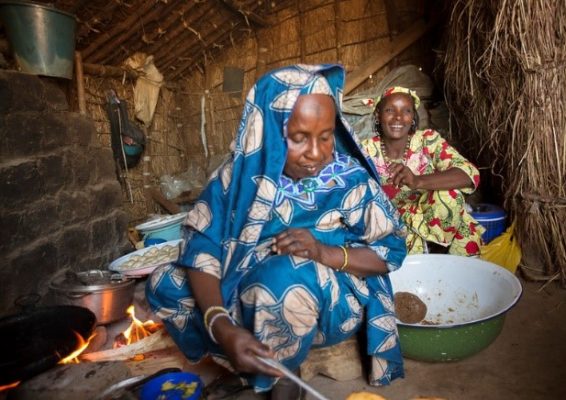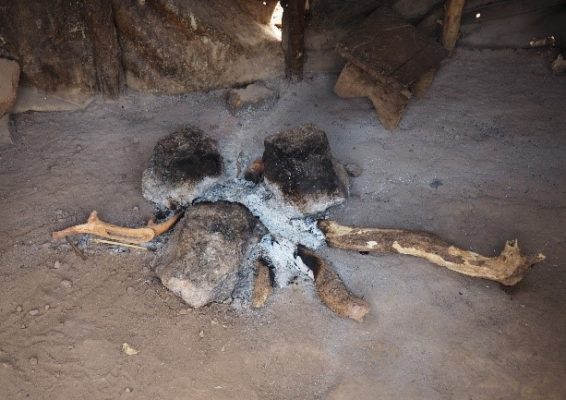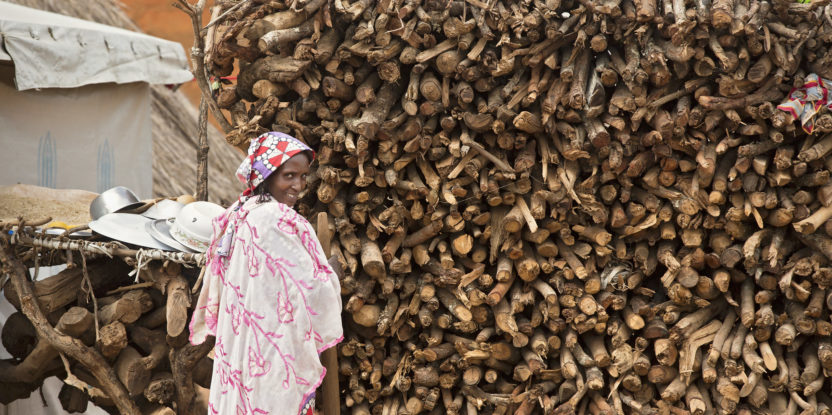
When civil war broke out in the Central African Republic (CAR) in late 2012, hundreds of thousands of people fled their homes in desperation, sparking one of the world’s most brutal and – since then – largely forgotten humanitarian crises.
Recurring outbreaks of violence have forced about 610,000 people to seek refuge in neighboring countries, mostly Cameroon, the Democratic Republic of Congo and Chad.
Cameroon alone hosts over 290,000 Central African refugees, around 47 percent of the total, according to the U.N. Refugee Agency (UNHCR). The East Region, the country’s largest and most sparsely populated administrative division, has absorbed most of the arrivals. Displaced people now put additional pressure in the region, which is characterized by persistent land use conflicts, soaring demand for natural resources, and limited livelihood opportunities.
At the epicenter of the crisis is the border town of Garoua-Boulaï, which in 2013 was overwhelmed by a massive influx of refugees. In response, humanitarian organizations established a camp to accommodate the overflow in the neighboring village of Gado-Badzéré, which is currently home to more than 25,000 people. Despite this measure, most refugees stayed in the city and its surroundings, eventually integrating to their host communities.
Population changes have added mounting pressure to already vulnerable ecosystems and existing social tensions.
Garoua-Boulaï and Gado-Badzéré are located in the forest-savanna transition zone of Cameroon, an area particularly sensitive to disturbances and landscape fragmentation from human activities. The landscape is vulnerable because it is shared by different user groups, who subject it to competing agricultural and pastoral activities.
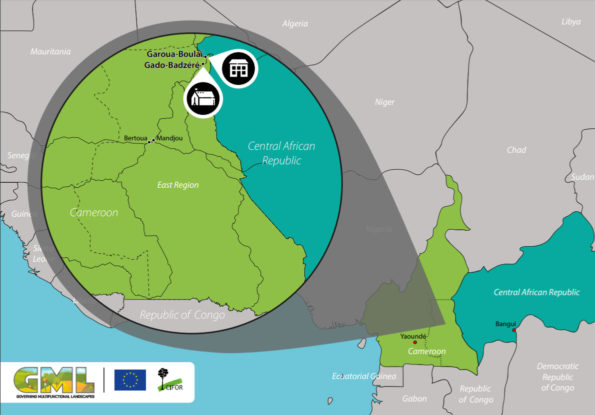
Location of Garoua-Boulaï and Gado-Badzéré. Credit: CIFOR
“This is why addressing the energy needs of the population and mitigating the environmental impact of refugee arrivals is a pressing need,” said Abdon Awono, a scientist working with the Center for International Forestry Research (CIFOR).
Among the many social, economic and ecological impacts that the large refugee population has had on this landscape, one of the most visible is the higher demand for energy, which puts increased pressure on the surrounding forests and woodlands, according to Awono.
“Both refugees and host communities need to cook their meals and boil water for drinking,” he explained. “To do so, they must gather firewood from nearby trees and shrubs.”
After seven years of continuous overexploitation of the landscape, the consequences are starting to be felt by people living in the area.
Women, traditionally responsible for collecting firewood, which offers the only affordable source of energy, are among those particularly impacted by the depleting forests.
“A few years ago, women could easily gather firewood in their surroundings,” said Martin Azia, a traditional chief of Gado-Badzéré. “Nowadays, they must walk up to 8 kilometers to find the right trees,” he added.
A serious associated risk of travelling long distances is that it makes women more vulnerable to assault, according to U.N. Women.
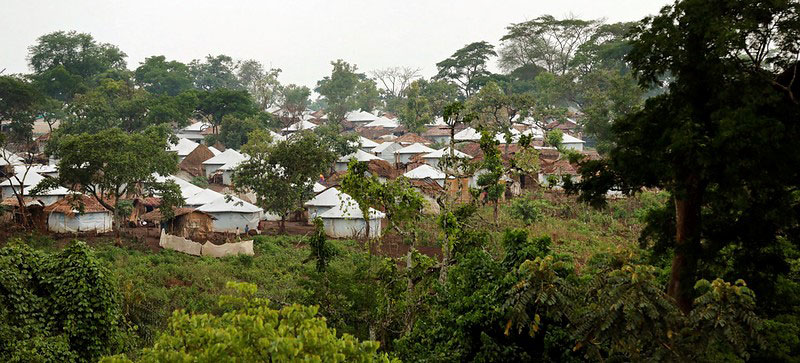
The arrival of refugees from Central African Republic has contributed to forest degradation. Photo: U.N. Women/Ryan Brown
Seeds of change
As part of the project Governing Multifunctional Landscapes in Sub-Saharan Africa (GML), financed by the European Union, CIFOR is working in the landscape of Garoua-Boulaï to promote more sustainable wood fuel value chains.
In view of the persistent degradation of the environment, CIFOR is supporting an integrated landscape intervention that moves from tree planting to participatory tree management, which engages local communities and refugees in joint decision-making.
“This is a long-term investment that requires addressing tenure problems and potential social conflicts, as well as securing people’s various livelihood activities while trees grow,” Awono said.
CIFOR’s intervention started by studying the landscape to understand its components, the main economic activities in the area and potential land use conflicts, said Pamela Tabi, a research assistant with CIFOR.
After the analysis, to promote wide stakeholder discussion and engagement, CIFOR established a consultation forum with both host communities and refugees to discuss local wood fuel challenges and restoration options, and to ensure local ownership and accountability.
Notably, the platform involves not only refugees inside the camps and locals in the surrounding communities, but also in nearby villages and cities, where most refugees reside – and are permitted to do so by the authorities. Encouraging active participation of women is also a key component of the project, Awono said.
“By using a landscape approach, we address the different environmental functions and social structures that could determine sustainable management options,” said Tabi. “In turn, they feed our learning on the best ways to manage wood fuel resources, ensuring that our interventions truly meet the local needs.”
This includes, for example, setting up a platform to involve both traditional and administrative authorities to mitigate agropastoral conflicts and risks of uncontrolled bush fires, according to Tabi.
Finally, to decrease demand for firewood and reduce the burden for women, CIFOR is also promoting the use of improved stoves that consume less wood. “We need to make improvements throughout the wood fuel value chain,” said Tabi.
A model for the future
Cameroon is not the only place in the world where a dramatic influx of displaced people is having a negative impact on the environment.
In northern Uganda, for example, the U.N. Food and Agriculture Organization (FAO) has documented clashes between host communities and refugees over massive deforestation and competition over natural resources. The same situation has been observed in South Sudan, Kenya, Nepal and many more countries.
“In many places around the world, displaced people depend on forests for heating, cooking and shelter,” said Awono. As such, CIFOR’s team hopes that this intervention in East Cameroon can become a model to guide interventions elsewhere.
“Often overlooked in humanitarian programs, environmental concerns are at the core of refugee crises,” added Jolien Schure, an associate researcher with CIFOR.
“They fuel a continuous cycle of conflict – while displacement is on the rise as a consequence of climate change, the environmental stress caused by population movements further exacerbates geopolitical conflicts that may catalyze new waves of displacement.”
To mitigate these impacts at the global level, CIFOR’s recommendation is to start sustainable management of tree resources as soon as displaced people begin arriving, adapting them to other landscape uses to reduce the likelihood of swift and devastating deforestation and degradation.
“Access to sustainable wood fuel alternatives and more efficient use of biomass energy as essential cooking fuel must be integrated in the design of humanitarian interventions, so the necessary investments can be made before we get to the point of heavily degraded woodlands,” said Schure.
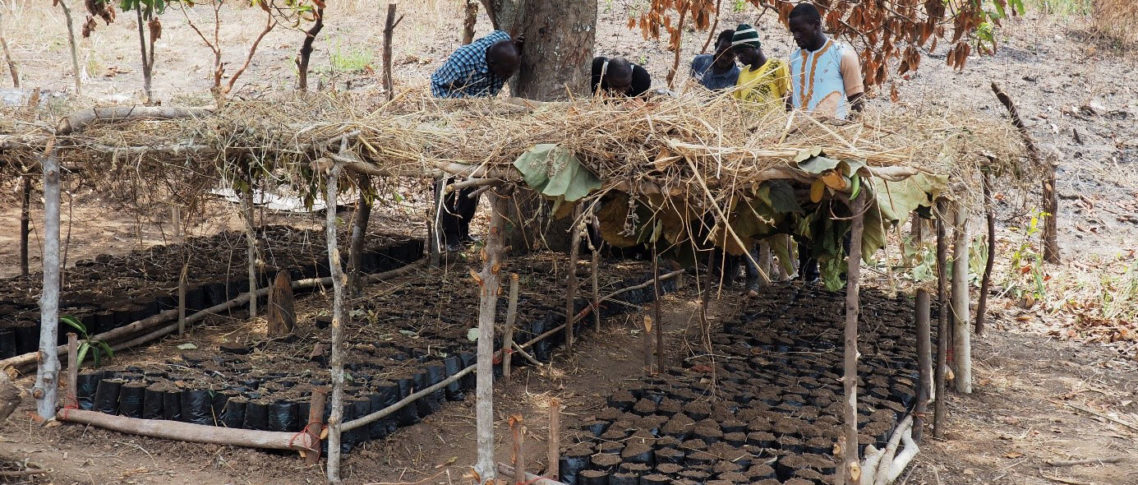
This work forms part of the Governing Multifunctional Landscapes (GML) project funded by the European Union.
We want you to share Forests News content, which is licensed under Creative Commons Attribution-NonCommercial-ShareAlike 4.0 International (CC BY-NC-SA 4.0). This means you are free to redistribute our material for non-commercial purposes. All we ask is that you give Forests News appropriate credit and link to the original Forests News content, indicate if changes were made, and distribute your contributions under the same Creative Commons license. You must notify Forests News if you repost, reprint or reuse our materials by contacting forestsnews@cifor-icraf.org.
